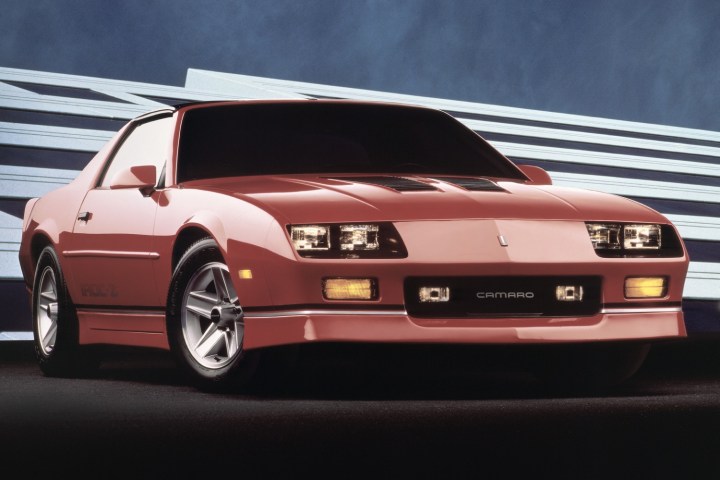
But the IROC-Z could be the next great investment for car collectors, according to Bloomberg. It cites data from collector-car insurer Hagerty showing that IROC-Z values have gone up 50 percent since 2011, compared to 39 percent for Ford Mustang GTs from the same period. That’s largely because these once-common cars are becoming rare.
Named after the International Race of Champions, the IROC-Z was based on the third-generation Camaro. It featured a 5.0-liter V8 engine and tuned suspension, making it one of hottest Camaro models available at the time, and winning praise from car magazines and enthusiasts. However, that’s mainly because the IROC-Z showed up at a low point in automotive performance. The most powerful version only had 215 horsepower, but enthusiasts had to make due with what was available.
Popularity among enthusiasts and a large production run meant that IROC-Zs became common, and so weren’t viewed as valuable. Most of them were modified for racing or simply destroyed by crashes and neglect. That means finding a pristine IROC-Z today is a lot harder than you might think, and pristine is what collectors want. Regardless of the model, buyers are now looking for the best car they can find, according to Bloomberg, not a restoration project.
That’s why a 1990 IROC-Z in great condition with just 204 original miles recently sold for $49,500. Bloomberg noted that most cars are currently valued in the $10,000 to $20,000 range. That’s still a major increase from a few years ago, when IROC-Zs were basically viewed as cheap used cars, not potential collectibles.
So who is buying these ’80s throwbacks? Nostalgia heavily influences collector-car ownership, so it’s possible that people who remember the IROC-Z from their youth, and now have a little more disposable income, are snapping them up. The IROC-Z also represents a more affordable alternative to classic 1960s Camaro models, values of which have skyrocketed.
Editors' Recommendations
- Gigabyte may have just leaked AMD next big release
- Chevrolet Camaro ZL1 1LE NASCAR racer is a distinction without a difference
- Chevrolet’s one-of-a-kind electric Camaro drag racer is now for sale
- 2020 Chevrolet Camaro gets a face-lift to erase controversial styling


